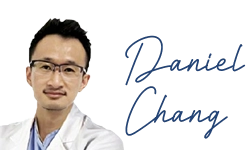Annyeonghaseyo!
In this series of articles, I will be discussing how you can be SKIN SUN-smart. Its getting awfully hot these days. With the weather hitting an all time high these last few weeks, and expected to rise even more come our hottest months from May to August, its time to take steps to protect yourself.
…and CONQUER saggy skin. Today, we will discuss how to CONQUER saggy skin and achieve a lifted and tightened effect. Ageing and gravity leads to sagginess. Of course the easiest way to lift skin is to use good old masking tape. Just kidding! Now ageing leads to the 3Ds, deflation, damage, descent.
- Descent: The skin loses collagen and elastin, and sags.
- Deflation is when the soft tissue layer loses volume, hence flattening the cheeks, liken to a deflated beachball.
- Damage from sun exposure leads to fine lines and wrinkles.
Let us dwell deeper into the skin, layer by layer.
Skin diagram
- Epidermis: This is the outermost layer which forms the skin barrier. Ageing causes it to weaken and lose moisture.
- Dermis: The skin loses its collagen and elastin in the dermal matrix due to sun damage and ageing.
- Subcutaneous layer: Volume is lost in the form of fat tissue, causing the redundant skin to sag.
- The overall result is SAGGINESS.
Treatment can be divided into the rule of 3s.
- Lifestyle
- Non invasive
- Surgical.
- 1) Lifestyle changes -> Please look under my TOP 3 KOREAN SKINCARE TIPS PAGE for further elaboration on this.
- I teach my patients the S.E.A and T.C.S principle, and arm them with the use of medical grade skincare products. T.C.S stands for Time, Cover and Sunscreen.
- T.C.S: Time: 10am – 4pm is the hottest time of the day. Stay indoors! Cover: Use a wide brimmed hat and shades to give yourself that extra cover. Sunscreen: Never leave home without it. All these are really PROTECTIVE measures.
- 2) Non invasively -> REPAIR measures with the use of COMBINATION treatment. HIFU and liquid facelift. Laser resurfacing and collagen laser for long term maintainence.
HIFU: This is the only FDA approved procedure to lift and tighten skin. It targets the SMAS, the same foundation layer addressed in a surgical facelift.

Basically, this involves the use of botulinum toxin AND hyaluronic acid to achieve a lifting effect. Here are 2 commonly performed procedures.
- Dermalift – This technique utilises a diluted dysport dose to induce tightening of the forehead, cheeks, jawline.
- H.A fillers – This technique involves careful placement of hyaluronic acid to anchor, support and lift your face.
In the above diagram, you can see areas for filler enhancement. Commonly performed treatments in Singapore are the Chin, Laugh lines, Cheeks and Nose augmentation
- 3) Surgically, its in the form of a surgical facelift. This addresses the underlying muscles through repositioning. The SMAS layer is also tightened in the process.
So when is the best time to undergo Non invasive skin lifting?
- Ageing – Starting early -at the 1st signs of jowling, is the best time
- Post weight loss
- Post pregnancy -> Commonly, after weight loss or a pregnancy, you can find excess skin, which simply wont go away whatever you do.
Sagginess can be divided into Mild, mod and severe.
- Mild sagging -> The use of HIFU is suffice
- Moderate sagging -> Combination of HIFU with Fillers +/- microbotox would yield the best results
- Severe sagging -> Surgical facelift would be the best option
Now, I STRONGLY believe in the use of non invasive therapy for safety, efficacy and minimal downtime.
As the majority of patients who complain of saggy skin have moderate degree of sagginess, for OPTIMUM results, I would recommend combination treatment, combining Ulthera with Fillers and Microbotox. Laser resurfacing can be used as a maintainence to reduce the loss of collagen with time.
The end result is – A lifted, tightened, more toned you!











